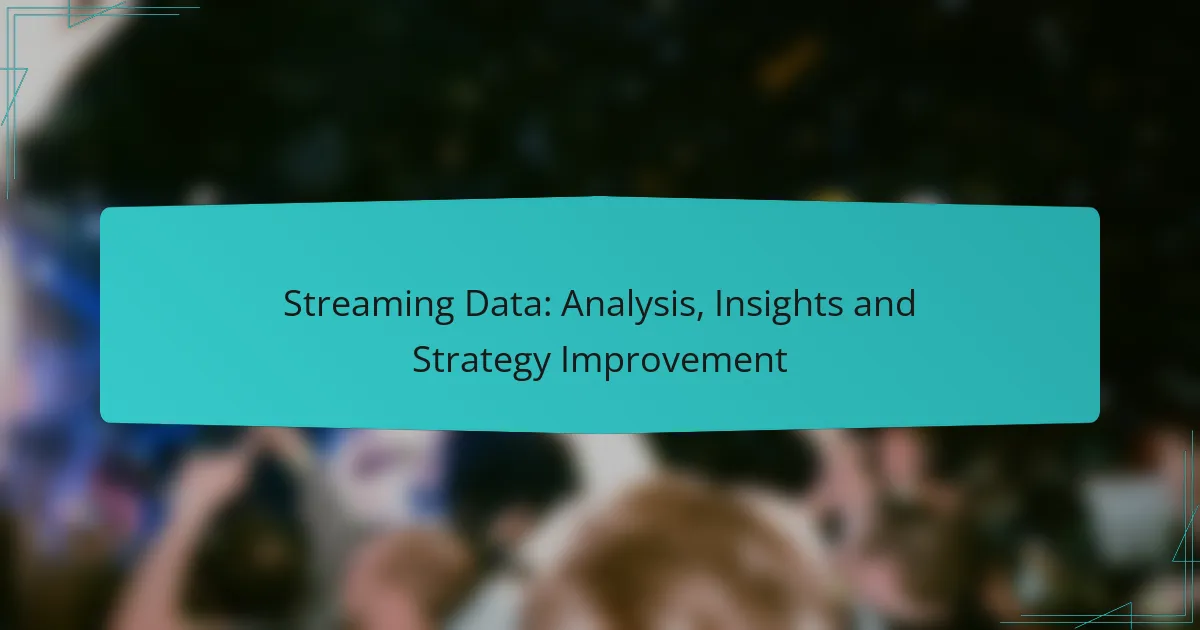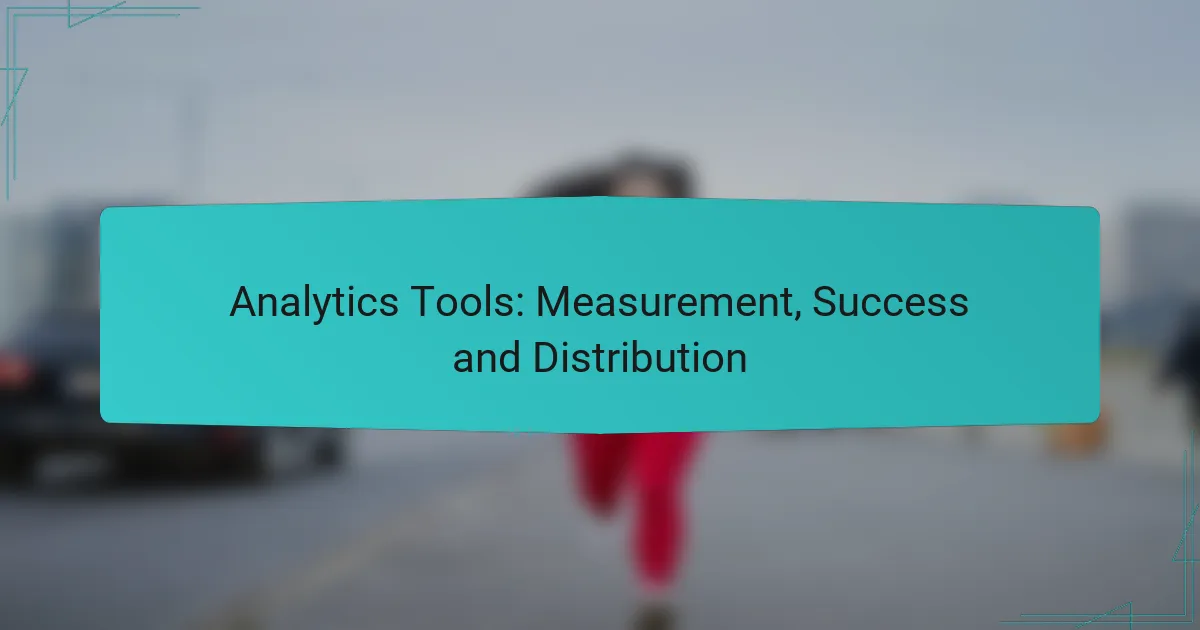Streaming data plays a crucial role in enhancing business strategies by delivering real-time insights that drive informed decision-making and improve customer engagement. By harnessing continuous data flows, organizations can swiftly adapt to market dynamics and refine their operational processes. Effective management of streaming data involves implementing strategies that ensure efficient processing and analysis, supported by robust governance and scalable architectures.

How can streaming data improve business strategies?
Streaming data enhances business strategies by providing real-time insights that inform decision-making, customer engagement, and operational processes. By leveraging continuous data flows, organizations can adapt quickly to market changes and optimize their strategies effectively.
Real-time decision making
Real-time decision making is crucial for businesses aiming to stay competitive. By utilizing streaming data, companies can analyze information as it arrives, allowing them to respond to events and trends immediately. For instance, a retail company can adjust pricing dynamically based on current inventory levels and customer demand.
To implement this, businesses should invest in robust data processing tools that can handle high-velocity data streams. Ensuring that decision-makers have access to dashboards displaying real-time analytics can significantly enhance responsiveness.
Enhanced customer insights
Streaming data provides deeper insights into customer behavior and preferences. By analyzing data from various touchpoints, such as social media interactions and website activity, businesses can tailor their offerings to meet customer needs more effectively. For example, a streaming service can recommend content based on viewing habits in real-time.
To capitalize on this, companies should focus on integrating customer data from multiple sources. Utilizing machine learning algorithms can help identify patterns and predict future behaviors, leading to more personalized marketing strategies.
Operational efficiency
Operational efficiency can be significantly improved through the use of streaming data. By monitoring processes in real-time, businesses can identify bottlenecks and inefficiencies quickly. For instance, a logistics company can track shipments and optimize routes based on current traffic conditions.
Implementing automated alerts for anomalies in operational data can help teams respond proactively. Regularly reviewing streaming data analytics can also lead to continuous improvements in processes and resource allocation.
Competitive advantage
Utilizing streaming data can provide a substantial competitive advantage. Companies that harness real-time insights can make informed decisions faster than their competitors, leading to better market positioning. For example, financial institutions can detect fraudulent transactions as they occur, minimizing losses and enhancing customer trust.
To maintain this edge, organizations should foster a culture of data-driven decision-making. Investing in training for staff on data analytics tools and techniques is essential to fully leverage the potential of streaming data.
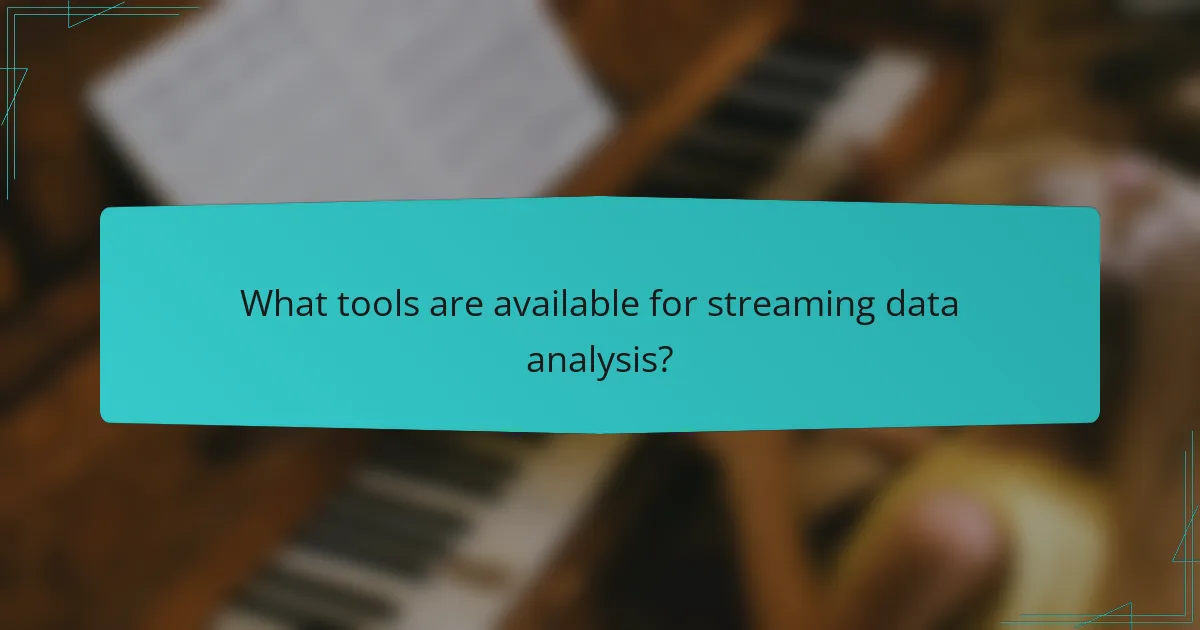
What tools are available for streaming data analysis?
Several tools are designed for streaming data analysis, each offering unique features and capabilities. The choice of tool often depends on specific use cases, scalability requirements, and integration with existing systems.
Apache Kafka
Apache Kafka is an open-source platform that excels in handling real-time data feeds. It operates as a distributed messaging system, allowing for the efficient processing of streams of records in a fault-tolerant manner.
Kafka is particularly well-suited for scenarios requiring high throughput and low latency, such as log aggregation and real-time analytics. Its ability to scale horizontally makes it a popular choice among organizations dealing with large volumes of data.
Amazon Kinesis
Amazon Kinesis is a fully managed service that simplifies the process of collecting, processing, and analyzing real-time streaming data. It supports various data sources, including IoT devices and application logs, enabling users to build real-time applications quickly.
With Kinesis, users can process hundreds of terabytes of data per hour and integrate seamlessly with other AWS services. It’s ideal for use cases like real-time dashboards and anomaly detection, but costs can accumulate based on data volume and processing time.
Google Cloud Dataflow
Google Cloud Dataflow is a fully managed service for stream and batch data processing. It uses Apache Beam, allowing developers to write data processing jobs that can run on various execution engines.
Dataflow is particularly effective for complex event processing and real-time analytics, offering automatic scaling and dynamic work rebalancing. Users should consider the pricing model, which is based on the resources consumed during processing, to manage costs effectively.
Microsoft Azure Stream Analytics
Microsoft Azure Stream Analytics is a real-time analytics service designed for processing large streams of data from various sources, including IoT devices and social media. It allows users to write SQL-like queries to analyze data in motion.
This tool is beneficial for creating real-time dashboards and alerts, with integration capabilities across Azure services. Users should be mindful of the pricing structure, which is based on the number of streaming units and the complexity of queries executed.
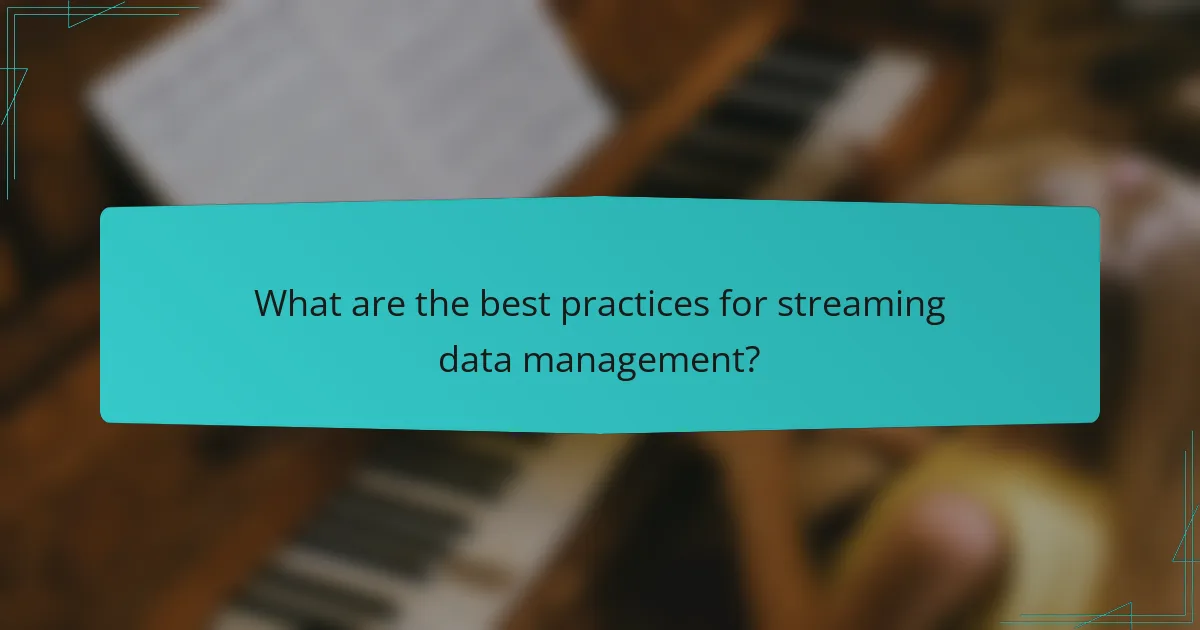
What are the best practices for streaming data management?
Effective streaming data management involves implementing strategies that ensure data is processed, analyzed, and utilized efficiently. Key practices include establishing robust governance frameworks, conducting real-time quality checks, and designing scalable architectures to handle varying data loads.
Data governance frameworks
Data governance frameworks provide a structured approach to managing data assets in streaming environments. These frameworks define roles, responsibilities, and processes for data stewardship, ensuring compliance with regulations and standards.
Implementing a governance framework involves creating policies for data access, usage, and security. Consider using established models like DAMA-DMBOK or the Data Governance Institute framework to guide your strategy.
Real-time data quality checks
Real-time data quality checks are essential for maintaining the integrity and reliability of streaming data. These checks involve validating data as it flows through the system, identifying anomalies, and ensuring accuracy before it reaches end-users.
Common techniques include implementing automated validation rules, monitoring data patterns, and using alert systems for immediate feedback. Aim for checks that can process data within low tens of milliseconds to minimize latency.
Scalable architecture design
Scalable architecture design is crucial for accommodating fluctuating data volumes in streaming applications. A well-designed architecture can efficiently scale resources up or down based on demand, ensuring optimal performance and cost-effectiveness.
Consider using cloud-based solutions or microservices architecture to enhance scalability. Employ load balancing and partitioning strategies to distribute data processing tasks effectively, allowing for seamless scaling as data loads increase or decrease.
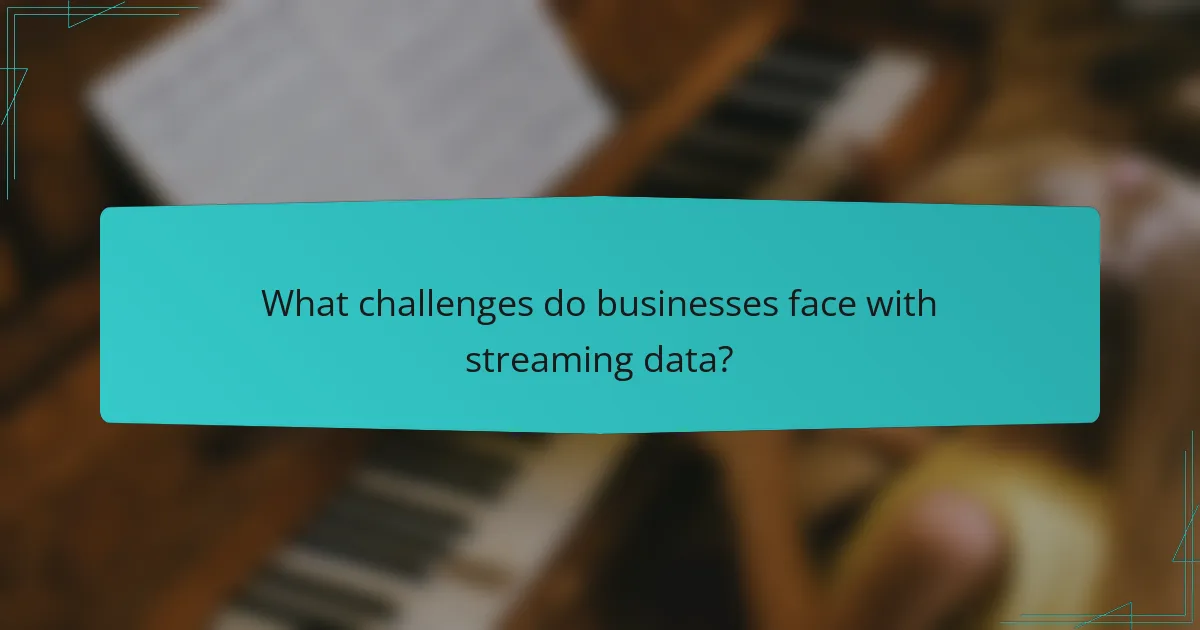
What challenges do businesses face with streaming data?
Businesses encounter several challenges with streaming data, including integration difficulties, latency issues, and security vulnerabilities. These obstacles can hinder the effective utilization of real-time data, impacting decision-making and operational efficiency.
Data integration issues
Data integration issues arise when businesses attempt to consolidate streaming data from various sources. Different formats, protocols, and systems can complicate the seamless flow of information, leading to inconsistencies and delays in data availability.
To address integration challenges, companies should consider using standardized data formats and robust integration platforms. Employing tools that support real-time data ingestion and transformation can streamline the process and enhance data reliability.
Latency concerns
Latency concerns refer to the delays that can occur between data generation and its availability for analysis. High latency can undermine the value of streaming data, especially in scenarios where timely insights are crucial, such as financial trading or emergency response.
To minimize latency, businesses should optimize their data processing pipelines and leverage edge computing solutions. Regularly monitoring performance metrics can help identify bottlenecks and improve response times.
Security vulnerabilities
Security vulnerabilities pose significant risks to streaming data, as real-time data flows can be more susceptible to breaches. Unauthorized access, data tampering, and interception are common threats that organizations must address to protect sensitive information.
Implementing strong encryption protocols and access controls is essential for safeguarding streaming data. Additionally, conducting regular security audits and training employees on best practices can further mitigate risks associated with data security.
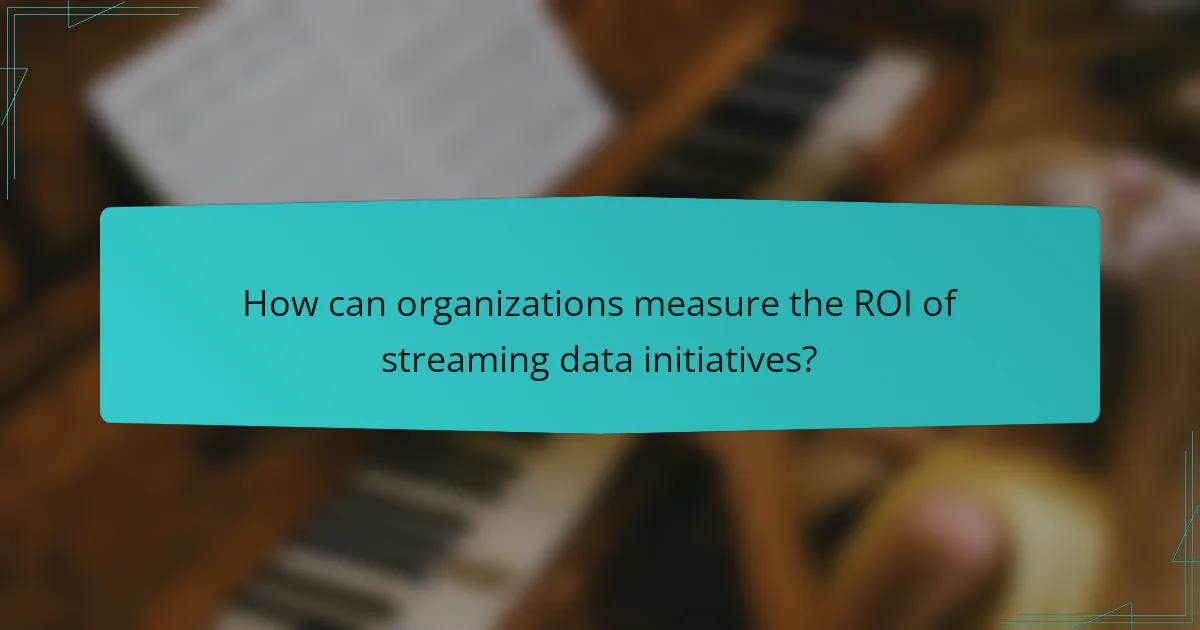
How can organizations measure the ROI of streaming data initiatives?
Organizations can measure the ROI of streaming data initiatives by evaluating the financial benefits gained against the costs incurred. This involves assessing improvements in efficiency, customer satisfaction, and decision-making speed that directly stem from these initiatives.
Identifying Key Performance Indicators (KPIs)
To effectively measure ROI, organizations should first identify relevant KPIs that align with their business objectives. Common KPIs include operational efficiency, revenue growth, and customer engagement metrics. These indicators provide a framework for quantifying the impact of streaming data initiatives.
For instance, a retail company might track sales per transaction or customer retention rates before and after implementing streaming analytics. This comparison helps in understanding the direct benefits of the initiative.
Calculating Costs and Benefits
Calculating the costs associated with streaming data initiatives involves considering infrastructure expenses, software licenses, and personnel training. Organizations should also factor in ongoing maintenance and operational costs. On the benefits side, quantify improvements in productivity, reduced downtime, and enhanced customer experiences.
A simple formula to estimate ROI is: (Net Benefits / Total Costs) x 100. For example, if a company spends $50,000 on streaming data and gains $150,000 in benefits, the ROI would be 200%.
Conducting a Cost-Benefit Analysis
A cost-benefit analysis (CBA) is crucial for understanding the financial implications of streaming data initiatives. This analysis should compare the expected benefits over a defined period against the total costs incurred. Include both tangible benefits, like increased sales, and intangible benefits, such as improved brand reputation.
Organizations can use tools like spreadsheets to model different scenarios and forecast potential outcomes. This approach allows for informed decision-making regarding future investments in streaming data.
Monitoring and Adjusting Strategies
Once streaming data initiatives are underway, continuous monitoring is essential to ensure they meet ROI expectations. Regularly review KPIs and adjust strategies based on performance data. This iterative process helps organizations stay agile and responsive to changing market conditions.
For example, if customer engagement metrics are not improving as expected, it may be necessary to refine the data analysis methods or enhance the user interface of the streaming application.
